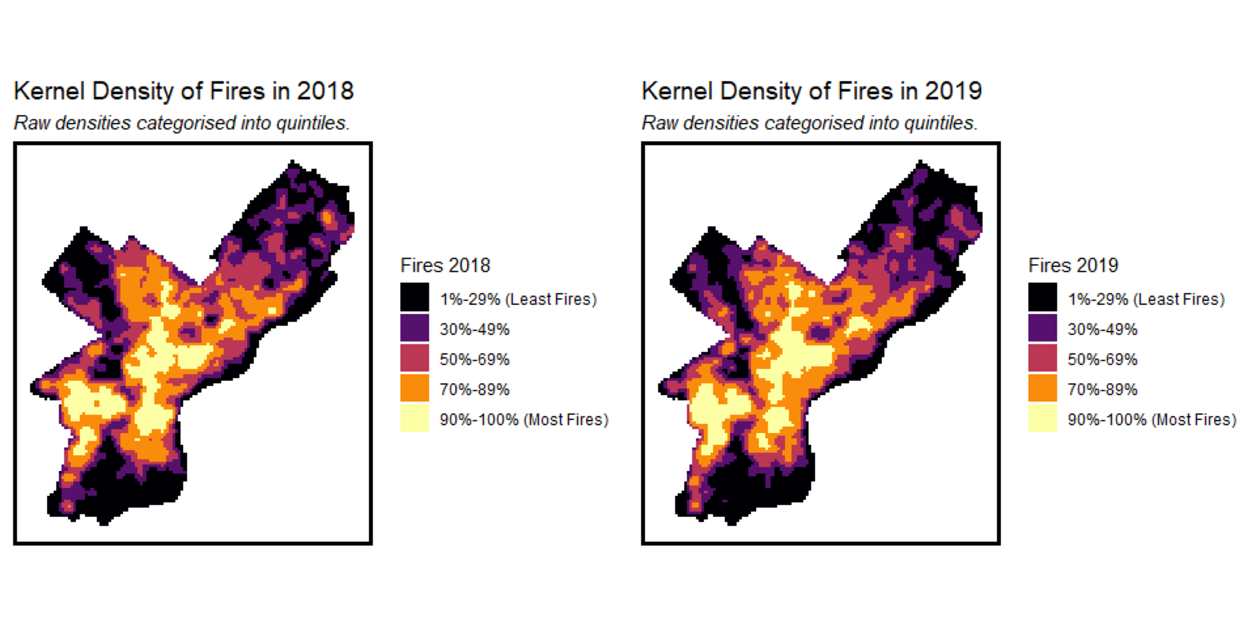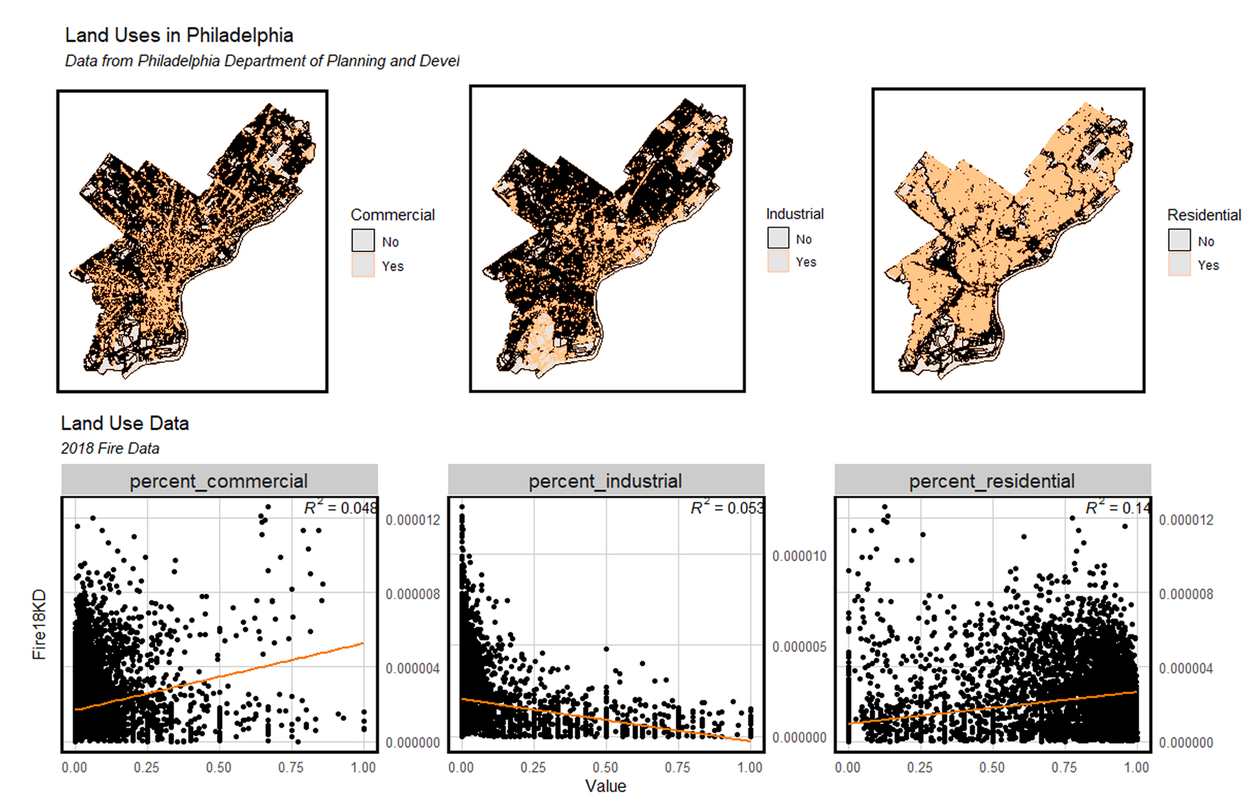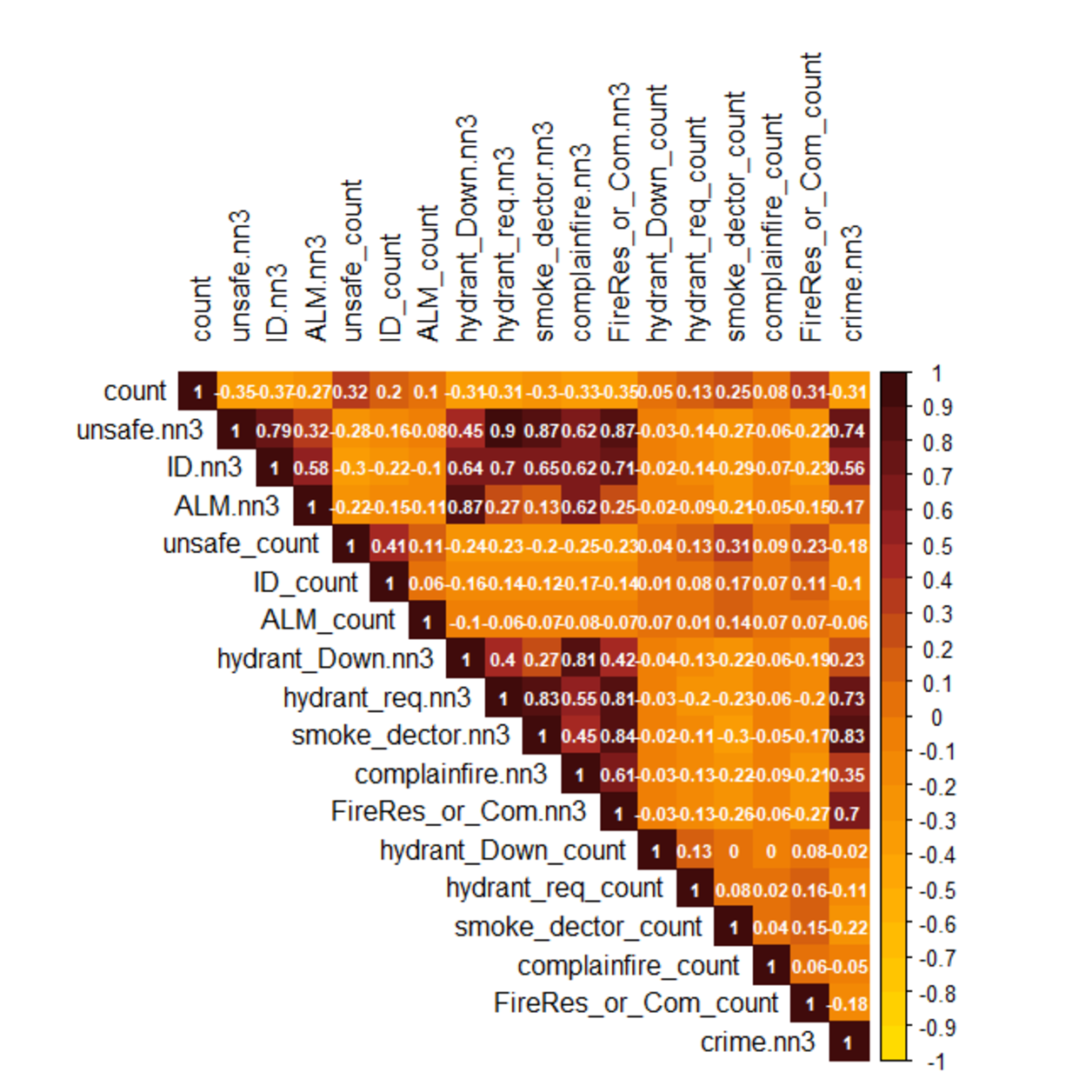Fire Infrastructure Management
Our project was to develop a fire hydrant inspection prioritization scheme for the Philadelphia Fire Department. Hydrants are currently inspected in an arbitrary order by firefighters of the engine that the hydrant is in. Our goal was to develop a prioritization model based on predicted latent fire risk in an area, such that hydrants in areas with a higher latent fire risk would be inspected first. We used data on past fires, land use data, social-economic data and built environment data to build a geospatial machine learning model in R to predict latent fire risk across Philadelphia. Our model was able to predict areas with a high latent fire risk better than traditional methods that use the kernel density of past fires. Our project culminated in an application that allowed the inspector to customize hydrant priorities from the following factors: predicted latent fire risk, type of land use, social demographics, and hydrant characteristics. The application displayed the hydrants on a map colored by priority and allowed the user to filter the hydrants by engine or priority.




